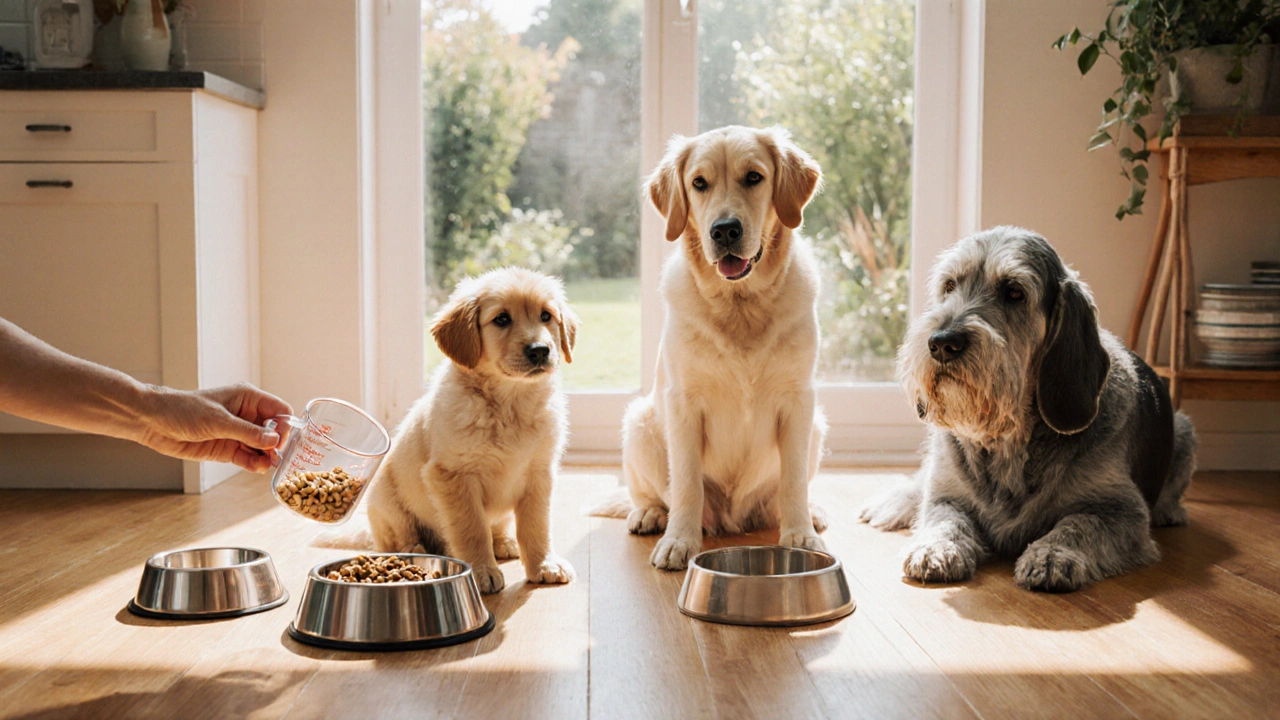Dog Feeding Schedule: Simple Routine for a Healthy Pup
Getting the right feeding schedule for your dog might feel like a puzzle, but it’s really just about matching food to your dog’s age, size, and activity level. A consistent routine helps with digestion, keeps energy steady, and can even curb unwanted behaviours like begging.
First thing – know your dog’s life stage. Puppies need more frequent meals because their bodies are growing fast. Most adult dogs do well on two meals a day, while senior dogs may prefer a smaller portion in the morning and a light dinner at night. The exact timing can shift based on your daily schedule, but try to keep the gaps between meals roughly the same.
How Often Should You Feed Your Dog?
Here’s a quick rule‑of‑thumb:
- Puppies (up to 6 months): 3–4 meals spread evenly throughout the day.
- Adult dogs (1–7 years): 2 meals – one in the morning, one in the evening.
- Senior dogs (7+ years): 2 smaller meals, or 3 if they have health issues that need steady calories.
Adjust the portion size based on the dog’s weight goal. A lean, active Labrador will need more calories than a couch‑loving French Bulldog. Use the feeding guide on your dog food bag as a starting point, then tweak up or down a few percent after you see how your dog’s weight changes over a couple of weeks.
Creating a Consistent Feeding Routine
Pick two times that fit your life – for example, 7 am and 6 pm – and stick to them. Dogs thrive on predictability, so try not to skip a meal or feed at wildly different times. If you’re away for work, consider an automatic feeder that releases the right amount at the set time.
Measure every meal with a kitchen scale or a proper cup. Free‑feeding (leaving food out all day) can lead to overeating and makes it harder to notice a loss of appetite, which is often the first sign of health trouble.
Always provide fresh water alongside meals. Some dogs gulp water right after eating; others sip later. Either way, the bowl should be clean and topped up at least twice a day.
Watch for signs that the schedule needs tweaking. If your dog is constantly begging, you might be feeding too little or giving treats in between meals. If they’re gaining weight, cut back a bit or increase exercise.
Lastly, keep the feeding area calm. Turn off the TV, avoid bustling kitchen traffic, and let your dog eat in peace. A quiet spot reduces stress and helps the stomach settle.
By matching meal frequency to your dog’s stage, measuring portions, and feeding at the same times each day, you give your pup a solid foundation for good health. Stick with it for a few weeks, watch the weight scale, and you’ll see the benefits – steady energy, a happy wag, and fewer vet visits.
Posted By Bryndle Redding On 16 Oct 2025 Comments (0)
How Often Should You Feed Your Dog Each Day?
Learn the right number of meals to feed your dog each day based on age, size, activity and food type, plus practical tips, calorie formulas, and common pitfalls.
READ MOREPosted By Bryndle Redding On 29 Jul 2025 Comments (0)
What Time Should You Stop Feeding Your Dog at Night? Expert Feeding Schedules for Happy, Healthy Dogs
Curious about when to stop feeding your dog at night? Uncover the science behind ideal evening feeding times, health tips, and how it affects behavior and sleep.
READ MORE
